The performance of a structure is judged by its ability to support applied loads with a minimum of material and a balanced stress distribution that avoids excessive overloads and underloads.
playing with different materials, tension, and rotation of elements.
OUR GOALS
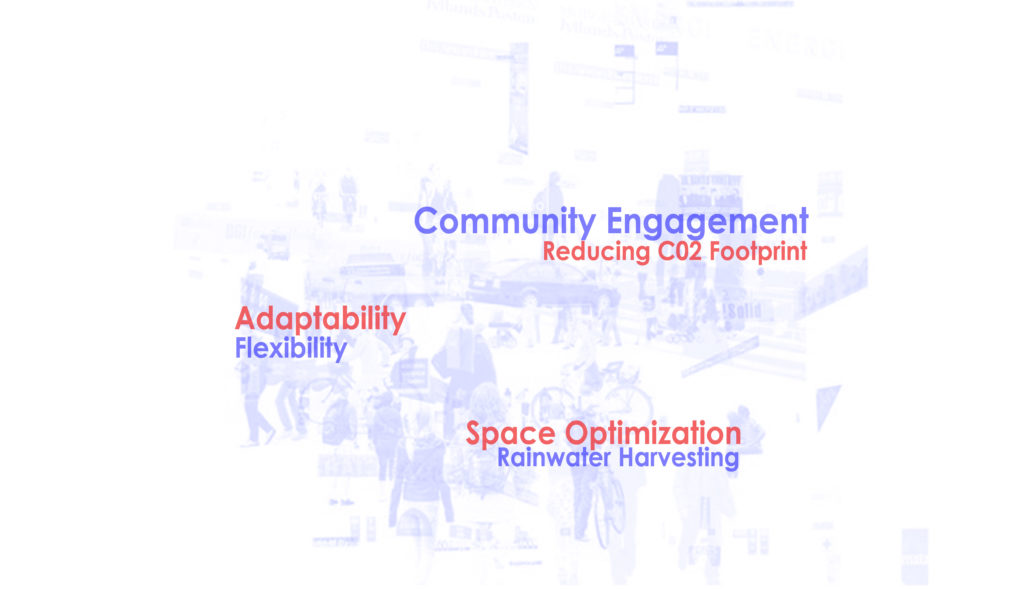
DESIGN STRATEGY
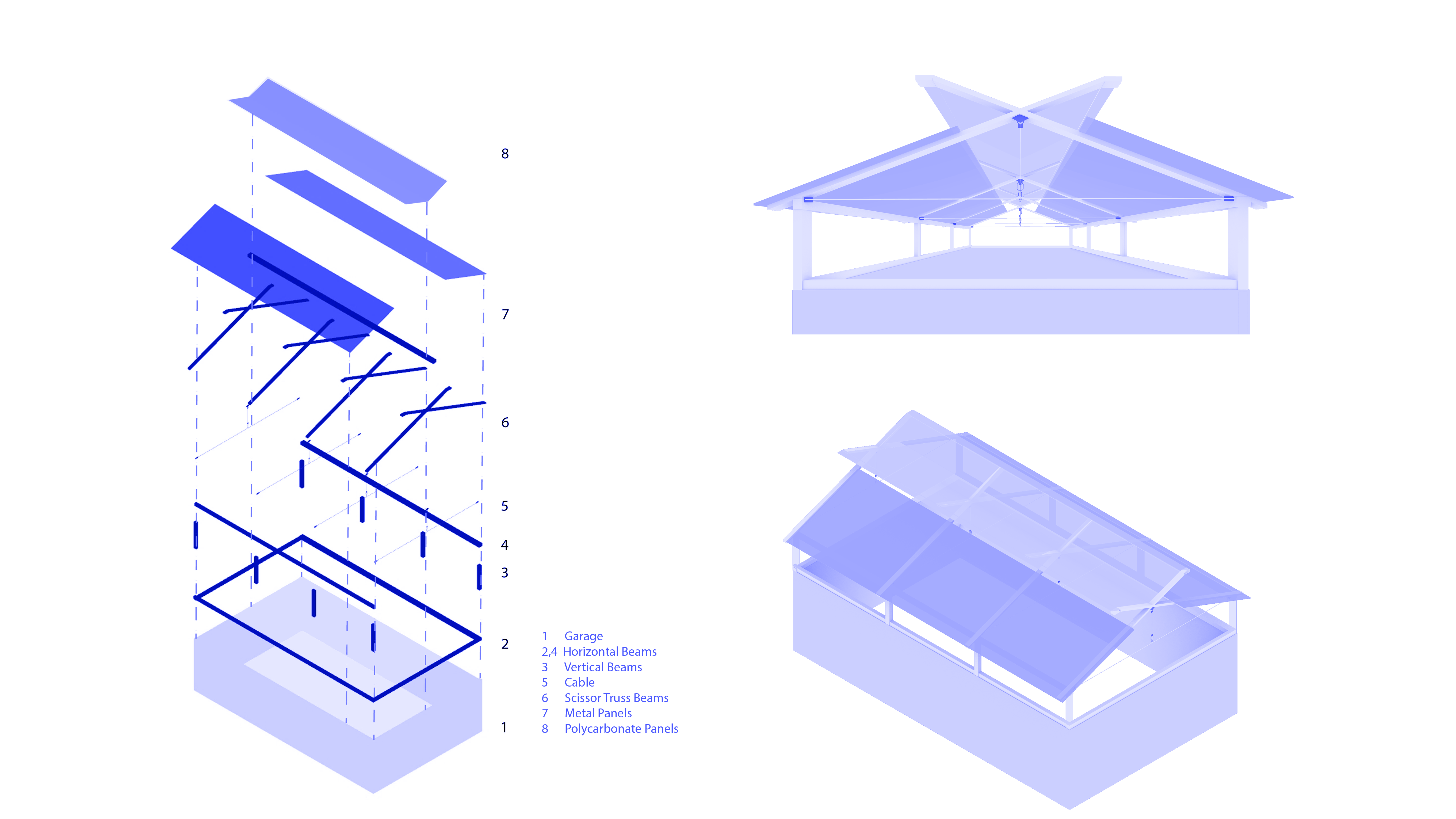
STRUCTURAL ANALYSIS
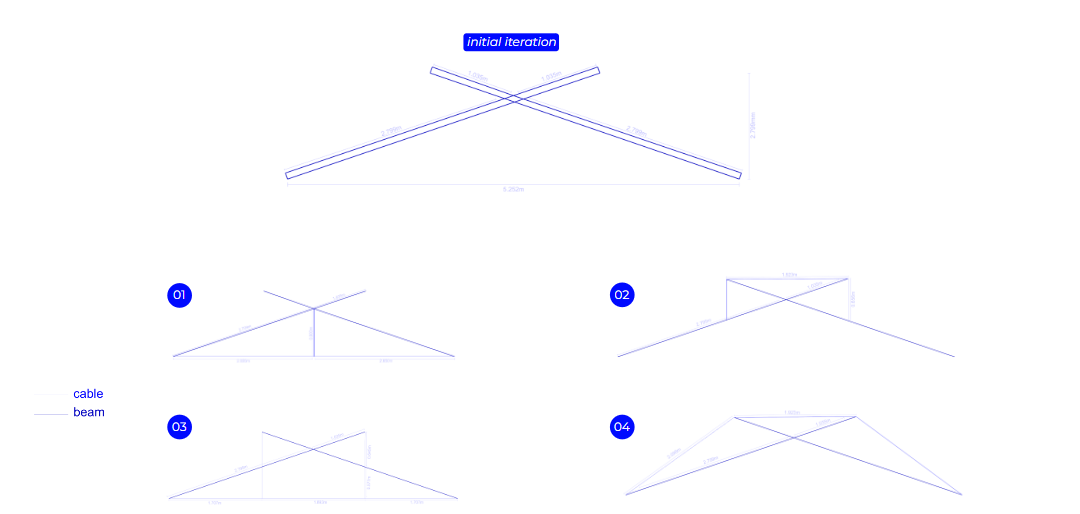

2D utilization comparison
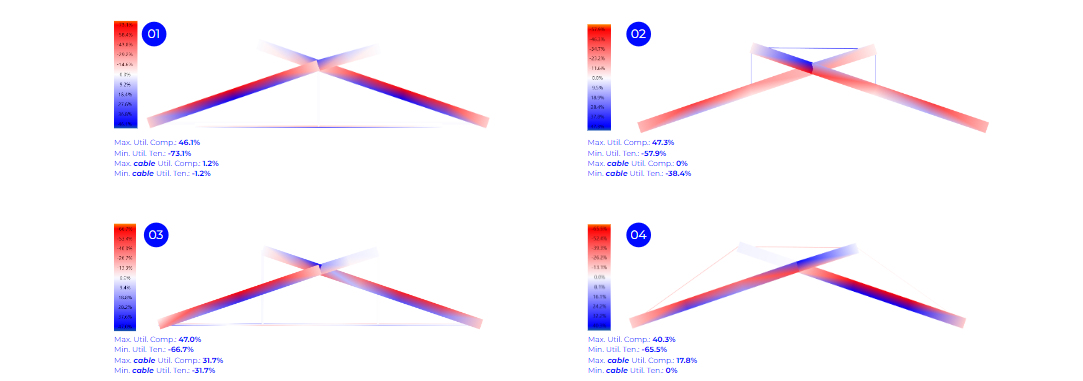
Utilization provides measurement of the performance of a structural component in relation to its rated capacity.
Iterations 01 and 03 show good utilization of wood in compression, with close values, indicating material efficiency. Iteration 03 seems to offer better use of cables, with significant compression stress. This could also reduce the tension load on the wood.Iteration 01 seems to put less strain on the cables, which may be preferable to avoid putting the cables under compression.

2D displacement comparison
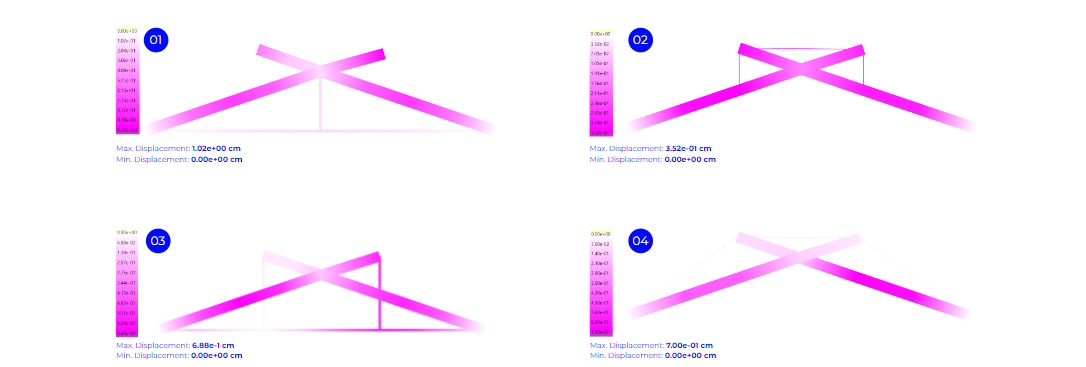
Displacement provides information on the rigidity and stability of the structure.
Iteration 03 appears to perform well in terms of structural rigidity, with a lower maximum displacement indicating greater stability under load. It also uses cables efficiently.Iteration 01 has moderate compression use for wood and minimal use for cables, suggesting some material efficiency.

2D stresses comparison (Nx)
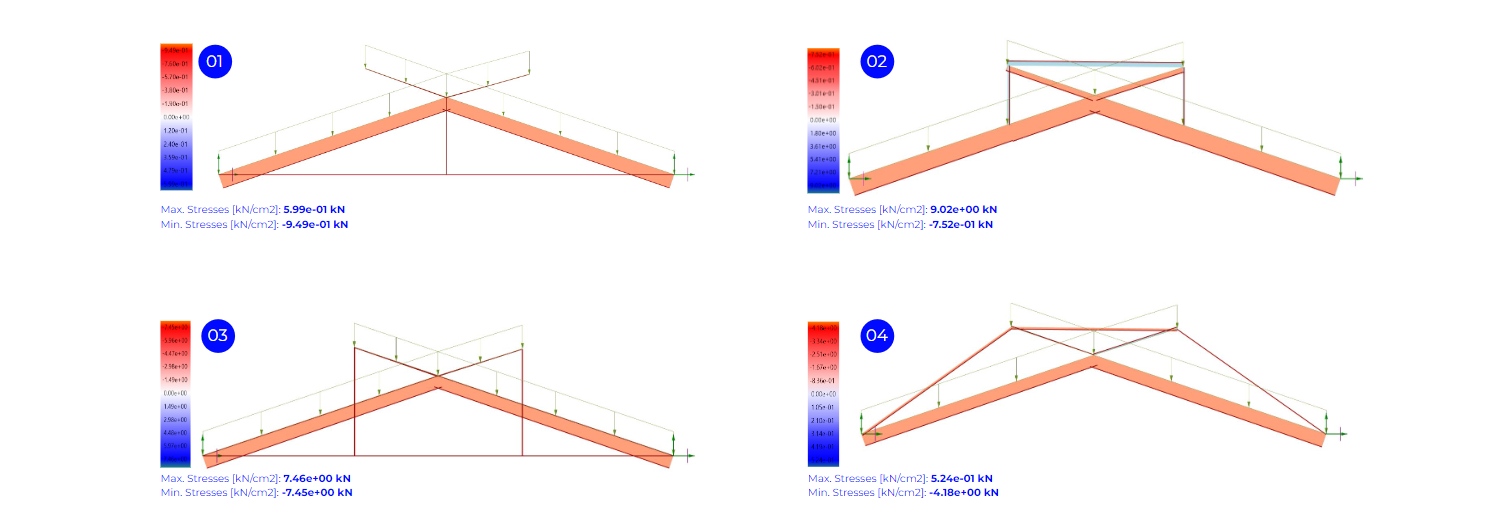
Axial stresses measures the internal force resulting from loads applied to a material.
Iteration 03 appears to perform well in terms of stress distribution, suggesting a design that distributes loads more evenly. Iteration 01 has relatively balanced maximum and minimum stresses, but indicating significant stress on the structure.

2D bending moment comparison

Bending moment is the product of the force applied at a perpendicular distance from the axis of rotation or point of support.
Iteration 01 is preferable because it has lower bending moments, indicating greater structural rigidity and better load distribution.
Iteration 03, with its highest bending moment, may require further analysis to determine if it can be optimized to reduce bending or if additional reinforcements are required.

ADDITIONAL COLUMNS
iteration 1
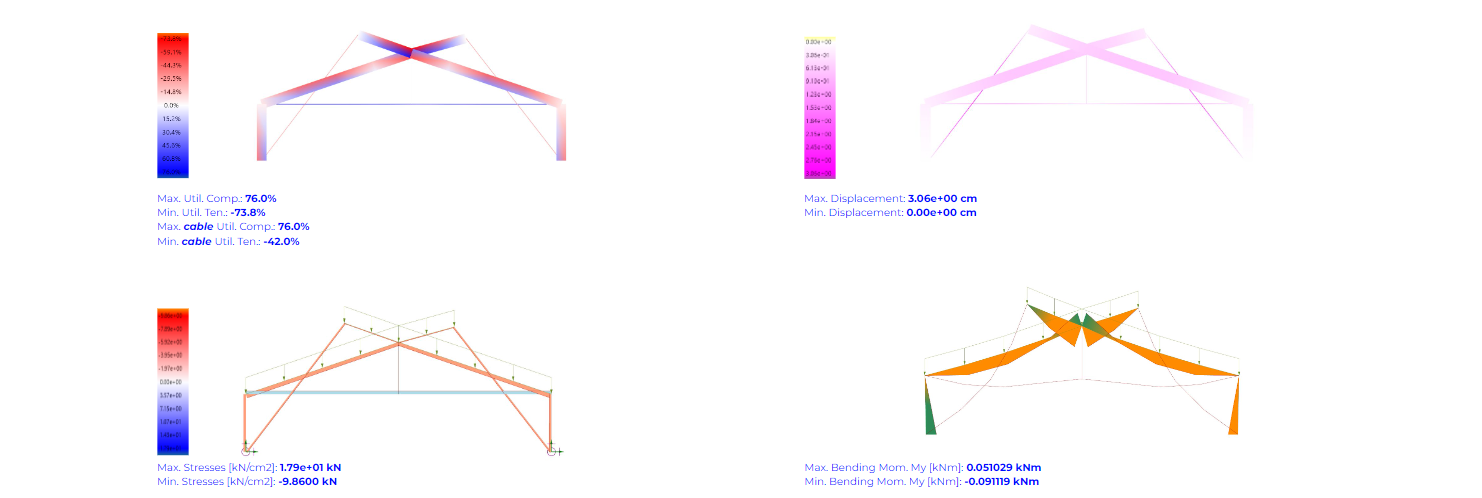
This structure performs well, with a good balance of forces, adequate rigidity and manageable bending moments.

CONNECTIONS


TESTING
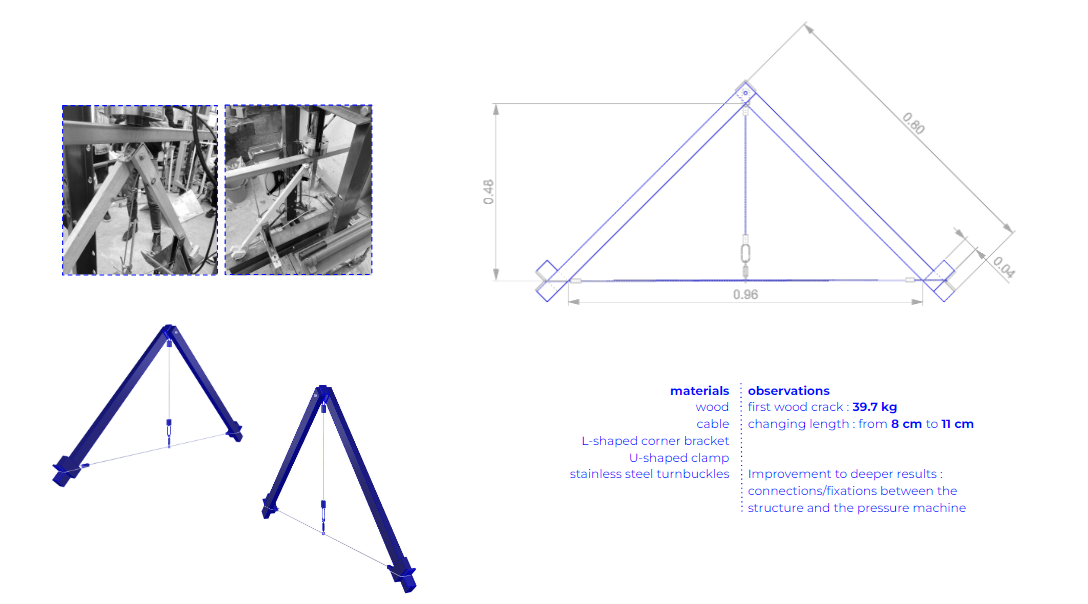

ASSEMBLY
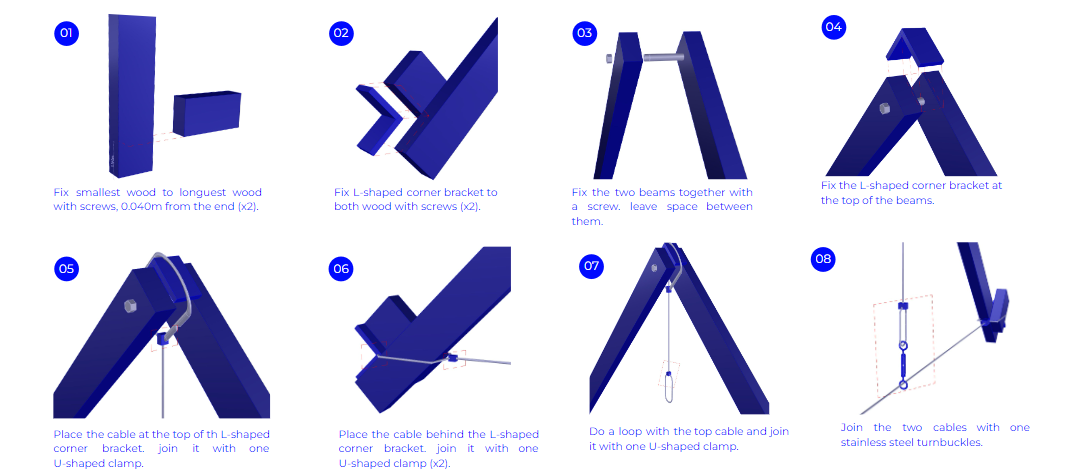

FURTHER STEP


The use of materials shows that the structure is fairly well balanced between compressive and tensile forces, means that the structure is using its wood carrying capacity effectively. Cables usage indicates significant voltage usage.
The very small displacement indicates a very rigid structure, this suggests that the structure will not undergo significant deformations under normal loads.
The structure is not subjected to significant bending, which is beneficial for the durability and stability of the structure

